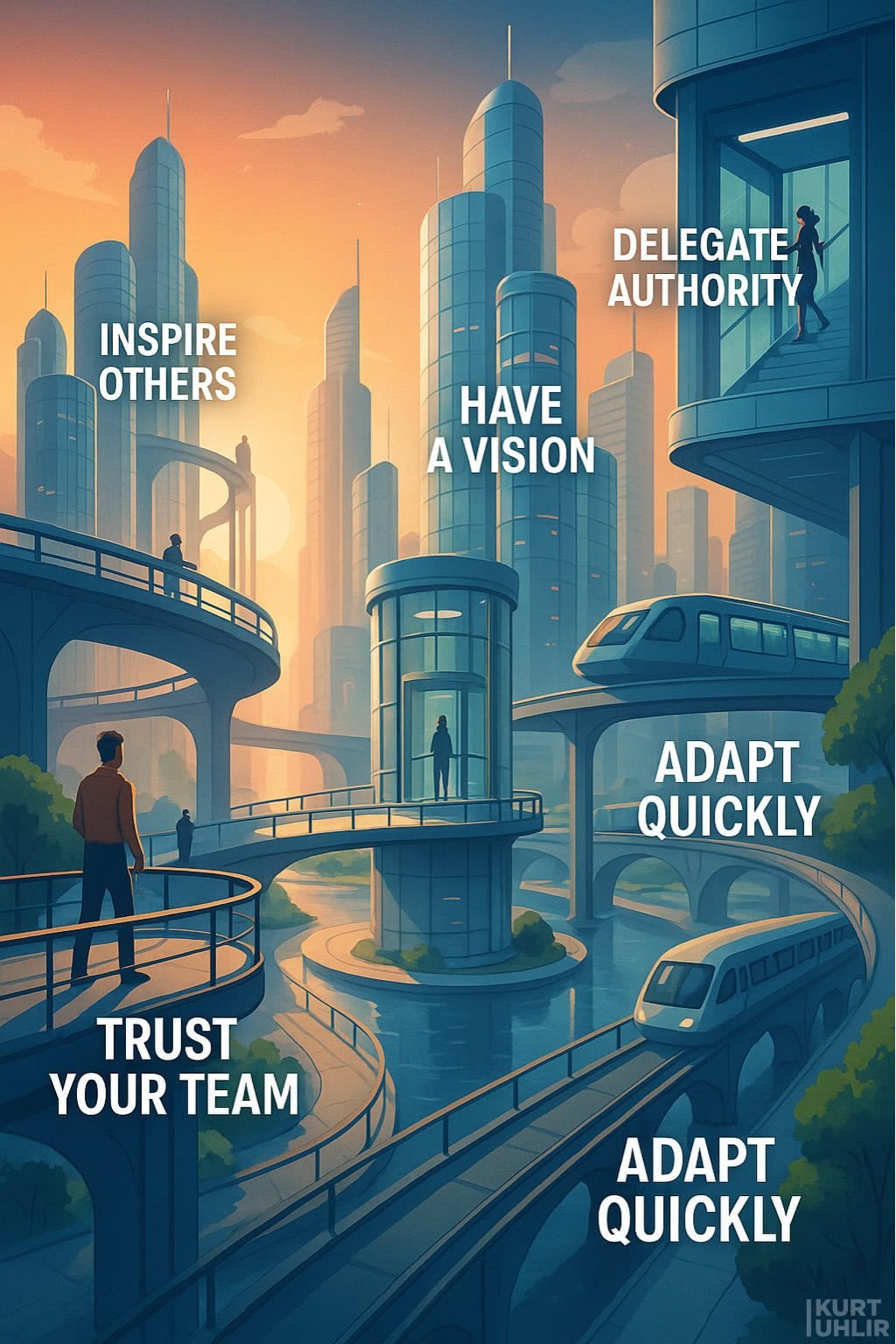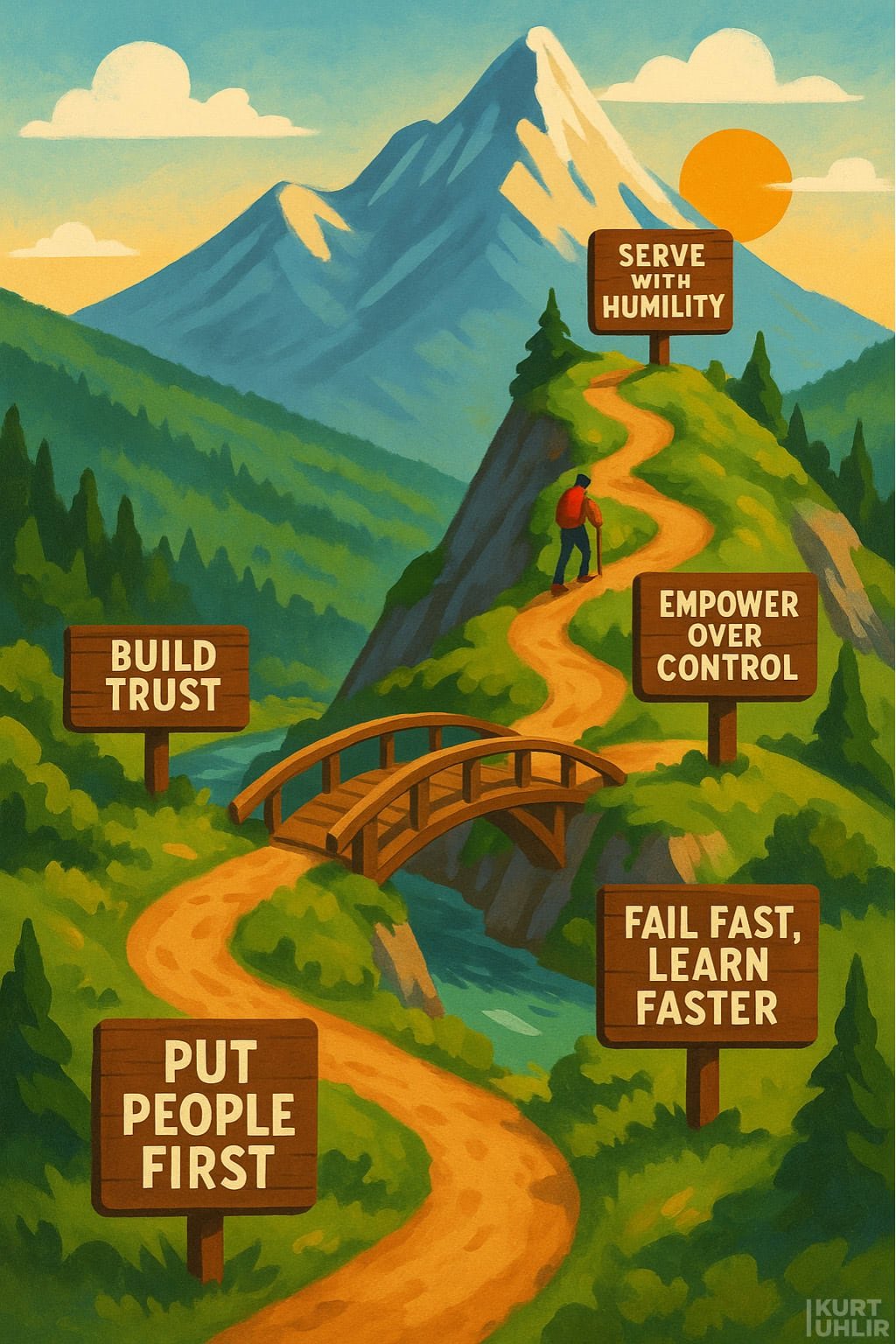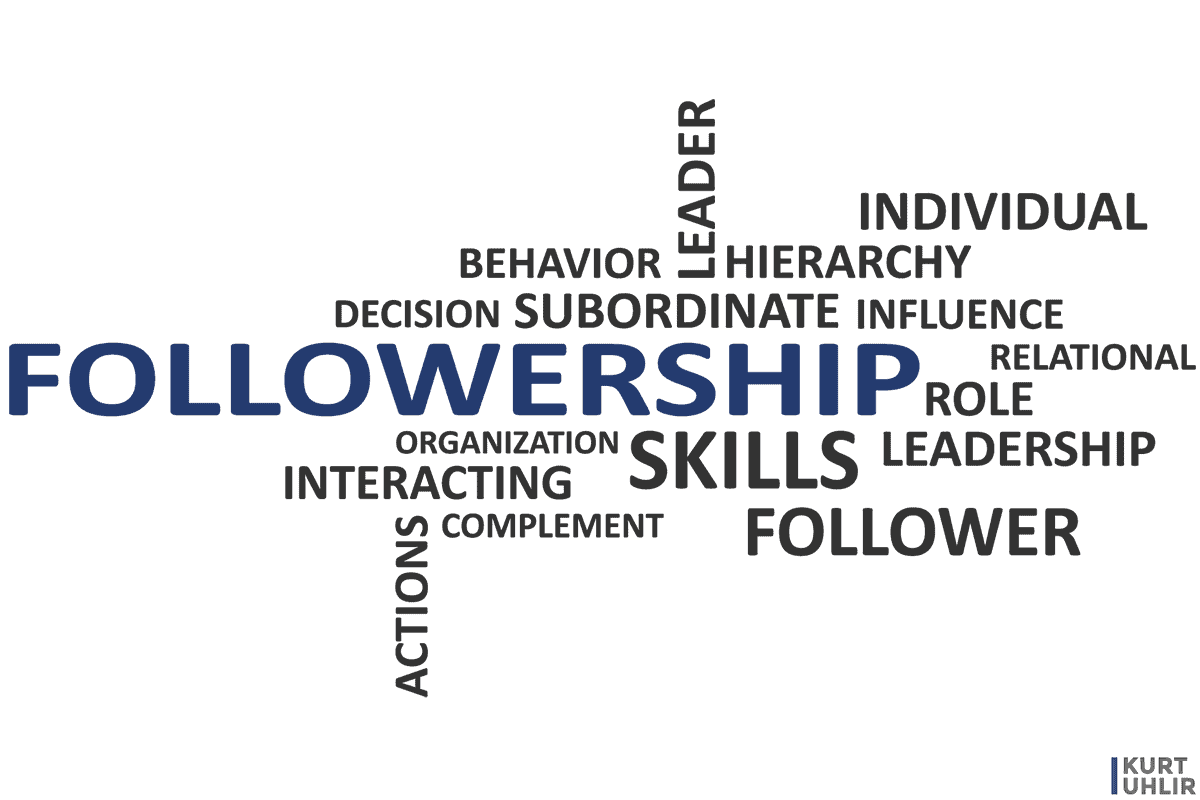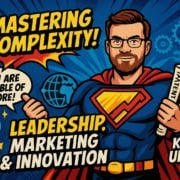Rethinking Marketing Leadership—Kurt Uhlir & Brandi Starr on Revenue Rehab
Do You Trust Your Team Enough to Vanish for Four Weeks? Why Most Marketing Leaders Can’t—and What That Reveals About Your Leadership
Most leaders think of themselves as empowering, collaborative, and modern. But there’s one litmus test I keep coming back to—if you disappeared from your company for a month with zero notice, would the business, your teams, and your outcomes actually hold together?
For most, if they’re honest, the real answer is no. That’s both a symptom and a diagnosis of a deeper issue at the heart of leadership and growth.
I’ve spent my career scaling organizations across six continents. From early venture-backed startups to public companies with $500 million+ in annual revenue, I’ve seen the same patterns play out, regardless of company size. As Brandi Starr—chief operating officer at Tegrita, powerhouse marketer, and host of Revenue Rehab—pressed during our conversation, the pressure on marketing leaders to drive revenue and prove ROI is higher than ever. In that crucible, our leadership style is either an accelerant or a brake.
Our conversation offer tangible insights from the trenches, no matter what department or size company you are in.
Revenue Rehab and Brandi Starr: Why This Conversation Mattered: Brandi doesn’t just ask good questions; she has the pattern recognition of someone who’s weathered the storms, shipped results, and lives where revenue accountability and leadership intersect. If you haven’t come across Revenue Rehab yet, Brandi sits at the center of the CMO and RevOps universe—author, speaker, and a rare operator who’s built Tegrita into a force across marketing operations, martech, and strategy.
More than 11,000 people have already watched our interview on YouTube, with many more tuning in via Spotify and Apple Podcasts.
In our exchange, it was clear from the start: this wasn’t another vague leadership chat. It was a real examination of why “servant leadership” isn’t soft—it’s commercial; and how authority and fear create the very risk we’re all trying to avoid.
If this conversation sparks something for you—questions, pushback, or agreement—I’d love to hear your thoughts in the comments below. I read every one.
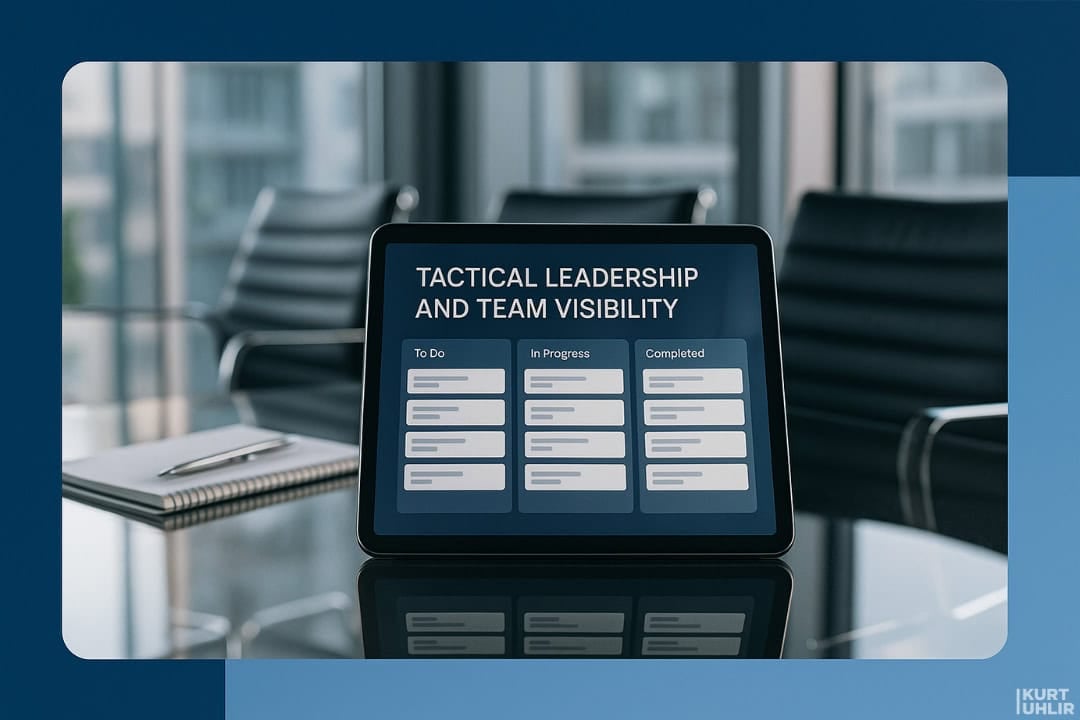
The Reality: Most of Us Lead More Authoritatively Than We Admit
I opened by banishing one of my least favorite buzzwords: “artificial intelligence.” It’s not that AI is useless; it’s that the industry’s current obsession with it—all flash, little depth—often mirrors how new technologies get weaponized inside organizations.
Leadership follows a similar path. Most leaders talk a progressive game, but when external pressure rises or uncertainty mounts, authority comes roaring back in.
Brandi challenged me: What about those leaders who say, “it’s my butt on the line, I don’t have the CEO’s trust, and I don’t have time for trial and error. I just need people who’ll do exactly what I say so I can hit my number”? Fair question. I’ve heard it worldwide.
Here’s the pattern I see over and over: Leaders conflate decisive execution with micromanagement. They aren’t reviewing every detail—email copy, campaign sequence, presentation—but they believe their policies, approvals, or even just their “brand” dictate enough control to ensure consistency. That’s a comforting illusion, not reality.
Dig into any marketing org, no matter how detailed your SOPs, and you’ll see your direct reports and managers are making hundreds, even thousands, of decisions without your sign-off.
The belief that you’re steering 30%, 50%, even 70% of your org’s choices? It vanishes under scrutiny.
Most marketing leaders—no matter how “nice” or approachable—are still fundamentally running things by authority and fear, not trust.
Brandi shared her evolution: coming from an instinct to “control because you care,” to realizing that being the bottleneck slowed her teams, limited creativity, and ultimately handcuffed her own impact. The best leaders grow out of that instinct and build clarity plus autonomy, not just oversight.

Servant Leadership: Commercial Discipline, Not Soft Skills
I hear “servant leadership” and see the eye rolls. Too many people view it as soft, touchy-feely, or even inefficient. But servant leadership isn’t about coddling. It’s not “do whatever you want.” It’s ruthless around business outcomes—just with a very different playbook.
My definition is simple: Authoritative leadership boils down to “do what I say, the way I say it, or you’re out.” Servant leadership says, “I’ve hired you for a reason—your capability, expertise, and ownership. My job is to make you more successful at hitting outcomes, not dictate your every move.”
This approach demands:
- Radical clarity around desired business outcomes and boundaries
- Explicit trust: You own your lane, and I’ll back you—even if I might do things differently myself
- Creating space for challenge: If the team disagrees or sees risk, I want them to push back. That’s why I hired them.
- Ownership over error: If things go sideways, we’re solving, not finger-pointing
As Brandi put it, “One of the best feelings as a leader is when I have someone compliment something my team’s done that I didn’t even know was happening.” That’s the mark of a healthy, empowered team. It only happens when you’ve created both permission and expectation for ownership at every level.
And here’s the real win: Servant leadership compresses the time to get things right. Instead of spending 12 months pursuing the wrong ideal customer profile because nobody wants to challenge the “official” strategy, your team tells you when the data shows you’re wrong—in three months, not twelve. When cycles shorten, pivots accelerate, and learning compounds, revenue and performance jump.

Tactics for Creating a Culture of Ownership Without Losing Control
Of course, this all sounds good in the abstract, but it often breaks down in the pressure of the day-to-day. Especially for newer CMOs or those scaling into bigger roles, the anxiety of “losing touch” or being surprised by something they should have known is real.
So how do I balance staying in control (knowing what’s happening in the business, delivering on accountability) with the discipline of stepping back? A few practices I lean on, many of which came up in conversation with Brandi:
1. Radical Agenda Design
Don’t just “check in.” Explicitly carve out time in one-on-ones and team meetings to ask, “What could I be wrong about?” and “Where do you need me to lean in—or lean out?” For newer leaders, I recommend scheduling this as a recurring agenda line item. It forces you to self-assess: Are people actually coming to you with fresh thinking, not just updates? Are they surfacing gut feelings or raising potential issues early?
2. Documentation as Empowerment—not Surveillance
I use lightweight project management tools—Trello, Asana, Monday.com. Not to hover, but so that I have always-on, passive visibility into what’s moving (and so I don’t become the blocker). When I have that dashboard, and my team knows they only need to raise their hand if we’re materially off-track, I can be hands-off on a daily basis, and escalate only when it matters.
3. The Weekly Pulse
Let technology create transparency. Apps (Slack plugins, simple survey tools, or dedicated lightweight platforms like Fellow) prompt team members to summarize what they accomplished that week, what’s up next, and any blockers. This isn’t about accountability theater—it’s about reducing the uncertainty that triggers micro-management panic. My best teams use these feedback loops to pre-emptively identify risk and achievement, not simply to “report up.”
4. Clear Role Definition and North Star Metrics
Most organizations—big and small—fail at this. You need more than a basic job description: your people must know, at the “Monday morning” level, what good looks like in their seat. That includes their responsibilities, key metrics, reporting cadence, and the degree of autonomy they’re afforded. Define the swim lane, set the standards, then get out of the way.
I shared a personal story that highlights this approach: At eXp World Holdings (owners of eXp Realty), I hired an “operations manager” (Scott Trowbridge) who wasn’t a traditional marketer at all. His job was to run the factory floor—making sure all processes worked, and that I only needed to get involved when there was real deviation from targets. He knew that his job was to pre-empt surprises and shield me from the details, unless something was genuinely on fire. That kind of operational alignment freed me to focus on strategy and innovation, without worrying about every bolt and conveyor belt.

When (and How) Servant Leaders Lean In—Not Just Lean Back
There’s a misconception that servant leadership means total autonomy or detachment. That’s not the case.
As Brandi wisely pointed out, sometimes team members crave more hands-on coaching, especially when they’re experimenting, out of their comfort zone, or facing significant risk.
The job, then, is two-fold:
- Give people authority to run, fail, and correct.
- But also make it explicit and safe for people to ask for tighter guidance when warranted.
I’ve found regular, direct questions like “Where do you want more autonomy, and where would you like me closer?” open the door to these conversations. And when people raise their hand for help, jump in precisely as much as needed—no more, no less. That kind of self-awareness and two-way feedback is a gift. Over time, team members who request more support eventually outgrow it, gaining the confidence to operate with increasing autonomy.
As a leader, you’ll naturally oscillate between 30,000-foot strategy and deep tactical firefighting. That vacillation is healthy—if it’s a conscious choice, not a default mode.
Use structures (agendas, dashboards, clear outcome ownership) to prevent constant firefighting and make your in-the-weeds work a deliberate act of service, not chronic habit.
The Daily Practice to Stay Humble, Aligned, and Focused
Every morning, as I’m brushing my teeth, I ask myself a vital question: “What are the three things I could be fundamentally wrong about in the business right now?” The trick is you have to name more than one, to shake yourself out of defensiveness or comfort.
Decisions that were “absolutely right” a year ago can easily be fundamentally flawed under today’s conditions. Leadership humility isn’t about doubt—it’s about building a culture where errors surface fast, learnings compound, and nobody is punished for raising risk.
I encourage my teams to do the same. Sometimes, for certain personalities, I’ll build this question right into our recurring meetings. The key is making it a muscle, not a one-off. When you and your team get comfortable voicing “hey, this feels off, but I can’t fully articulate why,” you unlock collective intelligence and continuous improvement.

The Four-Week Disappearance: The Ultimate Servant Leadership Audit
I’ll end where I began: If you left tomorrow for a month—no prepping, no hand-holding, just gone—would your team maintain momentum? Would business outcomes remain on course? For most leaders who see themselves as “modern” or “empowering,” the truth is still no.
If that question brings up anxiety (and it should, for many), then the work is clear:
- Identify exactly what would break, stall, or become chaotic.
- Assess the real reason: lack of clarity, lack of skill, or lack of trust?
- Make a plan—over the next six months—to alter your systems, coaching, or feedback loops until you can answer “yes” with conviction next time.
Put a calendar reminder for six months out: Revisit the question, and force an honest reckoning. If you do the work, you’ll see an organization that not only survives your absence but actually thrives on it—a team where leadership is leverage, not a straitjacket.
The irony is, cultivating this kind of trust, ownership, and alignment serves you as much as your team. Burnout drops. Growth accelerates. And you gain the freedom to focus on bigger problems—the ones that matter.
If you’re reading this and finding yourself nodding along, or squirming in recognition, I encourage you to give the question a try. And if you’ve cracked this code—or think I’m wrong—drop your story in the comments.
Let’s keep pushing each other—not to just talk about leadership, but to live it out, even when the pressure mounts.
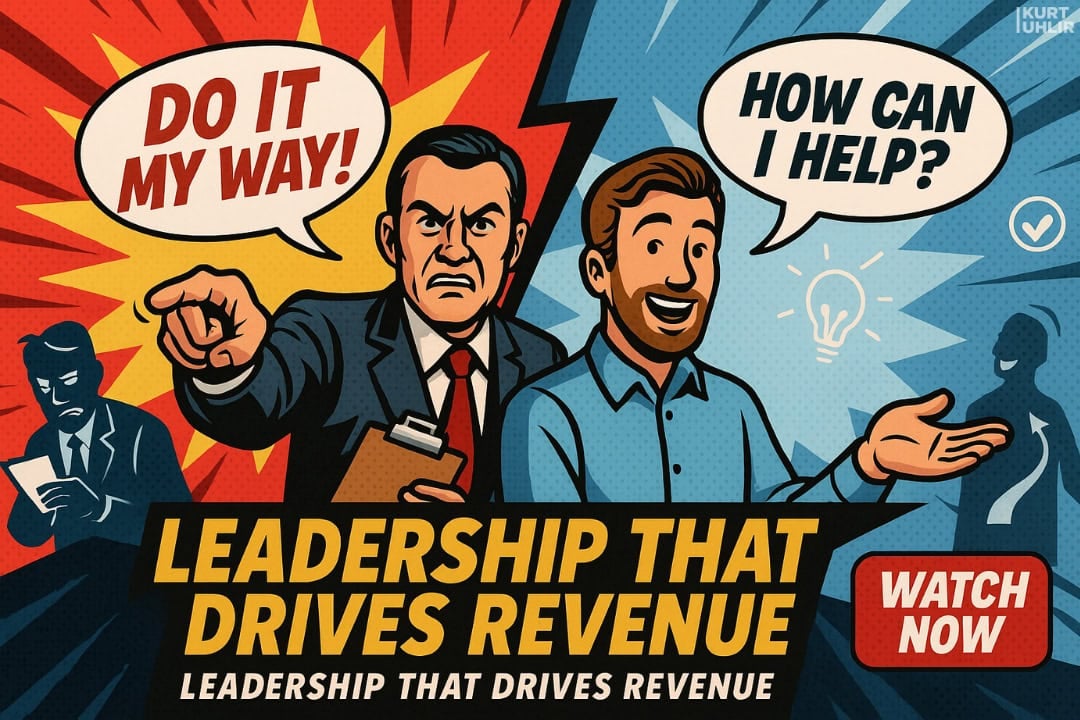
Questions to Consider
- I described two fundamental leadership styles—authoritative and servant leadership. Where do you see yourself or your organization on that spectrum, and why?
- Brandi and I talked about how leadership style directly impacts revenue and customer engagement. Can you share an example from your experience where leadership approach positively or negatively affected business outcomes?
- We discussed the importance of setting clear expectations and swim lanes. How does your team define what success looks like for each member, and how often do you revisit those definitions?
- Brandi mentioned early career experiences with authoritative leaders. How have past bosses shaped your personal leadership philosophy?
- One of my daily habits is to identify three areas where I might be fundamentally wrong in my business approach. How could adopting this practice reshape your problem-solving process and team communication?
- Brandi raised the challenge of letting go and trusting your team. What systems or practices help you feel confident stepping back while maintaining visibility and accountability?
- In the episode, we touched on tools like project management platforms and structured meeting agendas. What tactical systems have been game-changers for your team’s communication and autonomy?
- We both emphasized the value of failing fast and forward. How do you create psychological safety in your organization so that team members aren’t afraid to surface mistakes or uncertainties?
- Brandi shared a powerful question she asks her team: “Where do you need me to lean in more, and where would you like more autonomy?” How might this question shift your one-on-ones or team meetings?
- I posed a challenge: Ask yourself, ‘If I disappeared for four weeks, would my team continue to perform?’ What does your honest answer reveal about your leadership gaps and opportunities for growth?
These are designed to spark honest reflection, real-world examples, and actionable takeaways—just like our conversation on Revenue Rehab. Please take a few minutes to think through them, bring them up in your next team meeting, or leave your reply in the comments. I read every single comment on the site.

Memorable Brandi Starr Quotes
- “Leadership and how it impacts revenue is something that I don’t think is talked about enough.”“Leadership and how it impacts revenue is something that I don’t think is talked about enough.” – Brandi Starr
- “Thinking about my early career, how I was influenced and leaders that I had and then the leader that I aimed to be for my team. Now it really is making that space to be wrong, to try something and it not work. To really be able to figure that out fast and pivot.” – Brandi Starr
- “I think one of the best feelings as a leader is when I have someone compliment something my team is doing that I don’t even know was happening.” – Brandi Starr
- “I have found that question to be extremely powerful because I can admit, early in my career, I was that nice but authoritative leader. And it was more the control freak in me that, you know, wanted to make sure that things were done right.” – Brandi Starr
Memorable Kurt Uhlir Quotes
“There’s only two styles of leadership: authoritative—’do what I say or there’s the door’—and servant leadership, which is fundamentally about coaching, training, and trusting your people.” – Kurt Uhlir
“You can’t claim to empower people if every decision still funnels through you. The bottleneck is never the process; it’s always the leader.” – Kurt Uhlir
“The best leaders create an environment where smart people can push back—even if ultimately the decision is mine, I want my team challenging the status quo.” – Kurt Uhlir
“If you’re not confident your team could keep the business running without you for four weeks, you’re probably an authoritative leader, not a servant one.” – Kurt Uhlir
“So many leaders think they’re being ‘nice,’ but nice isn’t the same as servant leadership. The real measure is: does your team bring you problems you didn’t know about?” – Kurt Uhlir
“Marketing doesn’t end with leads—it’s responsible for the entire customer journey, from first touch all the way to renewing happy, loyal customers a decade later.” – Kurt Uhlir
“My belief is marketing encompasses everything from somebody has never heard of your brand or company until they’ve been a loyal customer for 10 plus years.” – Kurt Uhlir
“The truth is, most of us are wrong about something right now—we just don’t know it yet. Great teams admit that upfront and try to compress the time it takes to discover their mistakes.” – Kurt Uhlir
“The reality is, if you break down every decision being made, most leaders have no idea what’s happening under the hood.” – Kurt Uhlir
“I tell everyone who works with me: ‘You get extreme ownership. If something’s off track, it’s your job to raise it before I even notice.'” – Kurt Uhlir
“Being a servant leader isn’t just good for your team’s development—it’s critical to prevent your own burnout, too. If you can’t unplug, you’re doing it wrong.” – Kurt Uhlir
